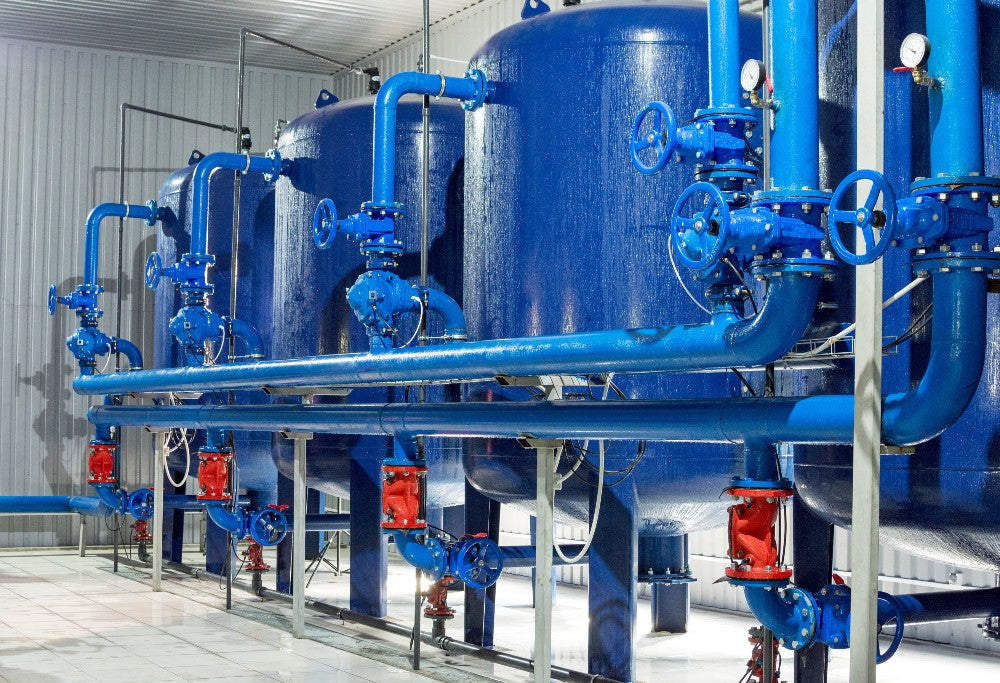There are numerous waterborne contaminates that cannot always be detected by natural human senses. Treating industrial water is an important factor in ensuring the health of the people and nature around you. Learn about what you can do to help keep water clean.
Determining Whether Your Water Is Contaminated
Before you can begin treating your water, you need to know if it’s contaminated and what it’s contaminated with. There are several ways to test water, including test strips, color disk kits, or hand-held digital instruments.
Test Strips are usually small in size, single-use strips that change color to identify a specific chemical or contamination. This test is usually rather simple but can be less accurate, especially if the user makes a mistake.
A slightly more complicated and more expensive kit would be a color disk kit. Typically, the process would be to add a powder or liquid agent to a water sample. The user would then place the water sample in a viewing box to compare results. A color gradient accompanies the viewing box for accurate analysis. Although, more accurate color disk kits do have lengthy wait times and require multiple steps, resulting in added complications.
A digital testing device or a hand-held meter such as a colorimeter and photometer are used for water testing. If you’re looking for the most accurate testing method, this is near the top. A tradeoff is that this is also one of the most expensive testing methods. The devices can also be more delicate in their required calibration and battery use. This option is more suited for field technicians rather than use by the average consumer.
After testing the water, you’ll need to create a treatment plan.
How to Treat Contaminated Water
Knowing how to treat your contaminated water is a plan you should have in place before the system is put into service. Here are the steps that you should use to create an effective water treatment program:
- Determine water flow rates and quality requirements - design engineers will analyze water samples to determine flow rates and quality requirements.
- Analyze water samples - Chemists with expertise in analysis will conduct testing for the facility's needs, such as identifying potential equipment issues or contamination risks from outside sources.
- Establish water treatment system requirements - The water analysis test results will determine what type of treatment is needed to control pH levels, unwanted minerals, alkalinity and bacteria.
- Mineral removal - Removing minerals from process water is important in order to prevent scale buildup and improve efficiency. Reverse osmosis may reduce the amount of total suspended solids or dissolved compounds, but not both simultaneously; filtration will remove unwanted minerals but does not eliminate the need for chemical treatments.
- Add necessary chemicals - To prevent scaling and corrosion in the plant's equipment, chemicals can be added to water or biocides used against slime algae.
- Determine boiler treatment - It is imperative that an oxygen scavenger be used to remove any oxygen from boiler water. This will protect heat exchange surfaces and ensure the longevity of your equipment by preventing pitting corrosion, which can lead to expensive repairs or even a complete replacement. A small amount of polymer (even if you use filtration) is typically added in order to transport these particles toward their exit through the top drain during the blowdown process--this helps reduce buildup on other parts within the system.
- Address cooling system requirements - Removing minerals such as calcium will change the LSI (Langelier Saturation Index) value, which is an indication of how likely it would be for a given substance to precipitate or dissolve into your water. Removing this mineral can lower that number and create more corrosive environments in systems with filtration capabilities; you’ll still need corrosion inhibitors regardless though! All open cooling systems must be treated with biocide to prevent biohazards such as legionella and listeria. This includes the surfaces of heat exchange pipes, pumps, valves or other components that come into contact with water in order for them to avoid inefficiency over time due to slime build-ups from anaerobic bacteria colonies growing on their surface.
- Establish remote monitoring - Water experts can monitor water quality remotely, making any necessary adjustments to maintain desired requirements.
How to Prevent Water from Becoming Contaminated
Water contamination will always exist but certain types of pollution and contamination can be prevented.
- Don’t overuse pesticides and fertilizers. Using the correct amount or less will prevent runoffs into nearby water sources. Adding more plants into your garden is another way to prevent pesticides and fertilizers from making their way into water sources.
- Be mindful of what you’re putting down the sink or flushing down the toilet. Paints and oils are 2 common items that cause water pollution or contamination.
- Don’t throw waste into rivers, lakes, or oceans. Picking up litter along the beach or creek bed is a great way to prevent contamination.
All of these methods for treating contaminated water are worth exploring and trying out, but the best way to ensure you’re not drinking unsafe levels of bacteria is by filtering your water with a good-quality filter. If you want more information on how to find a quality filter that will remove harmful pathogens from your tap or well water, contact our team today!

